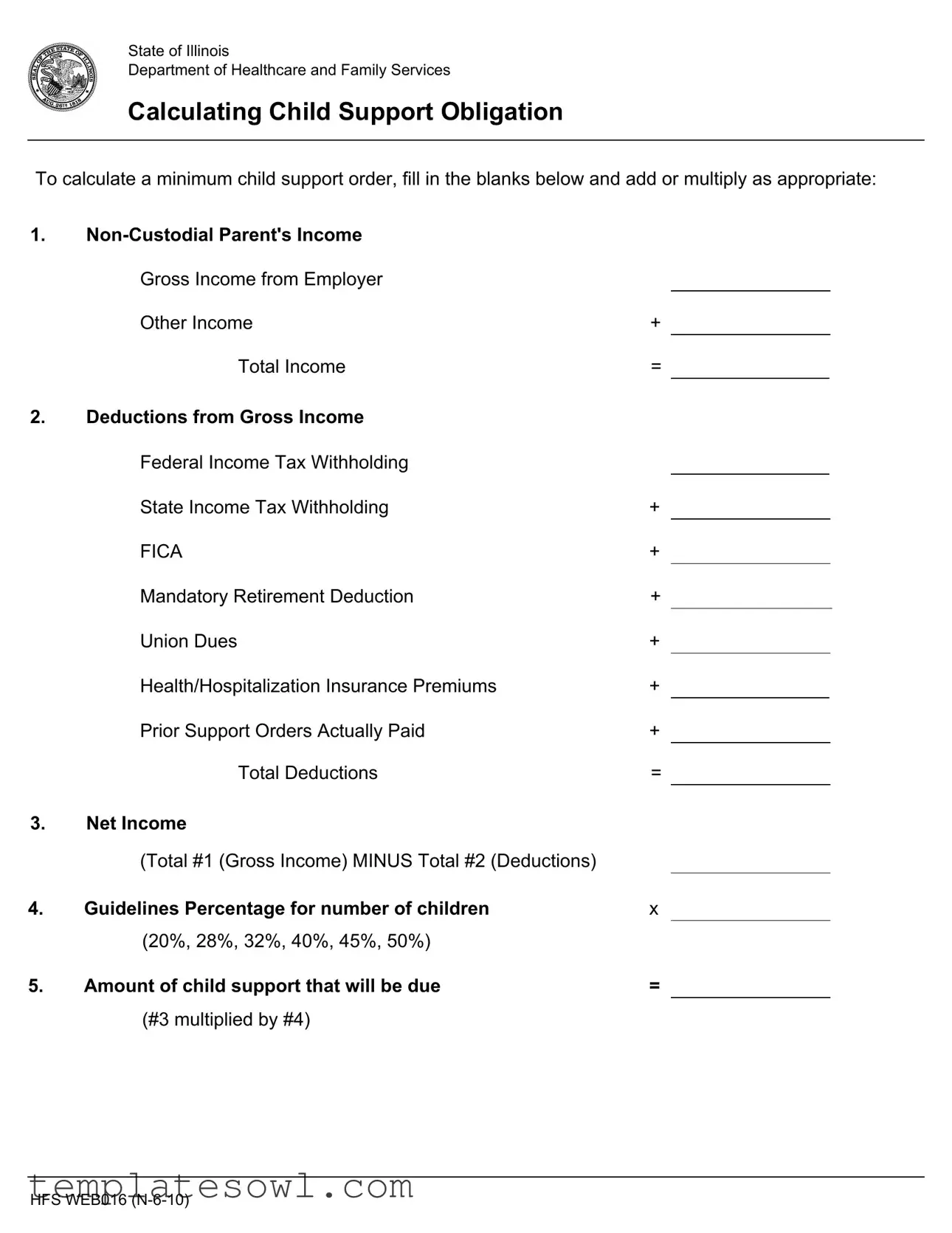What is the purpose of the Illinois Calculating Support form?
The Illinois Calculating Support form helps determine the minimum child support order for non-custodial parents. By calculating the net income of the non-custodial parent and applying the appropriate guidelines percentage, the form provides a straightforward method to ensure that child support obligations are fairly assessed.
How do I calculate net income using the form?
To calculate net income, first, total the non-custodial parent's gross income, which includes wages and any other sources of income. Next, identify and sum up all deductions from gross income, such as federal and state taxes, FICA, and health insurance premiums. Subtract the total deductions from the gross income to arrive at the net income.
What percentage of income should be used for calculating child support?
The guidelines percentage depends on the number of children requiring support. The scale is as follows: for one child, use 20%; for two children, 28%; for three children, 32%; for four children, 40%; for five children, 45%; and for six or more children, 50%. This percentage is then multiplied by the net income to determine the child support amount owed.
What deductions are allowed when calculating gross income?
Allowed deductions include federal income tax withholding, state income tax withholding, FICA contributions, any mandatory retirement deductions, union dues, and health or hospitalization insurance premiums. Additionally, prior support orders that have been paid can also be deducted from gross income.
Can child support amounts be adjusted after the initial calculation?
Yes, child support amounts can be adjusted due to changes in circumstances. If the non-custodial parent's income fluctuates, or if there is a change in the number of children or their needs, a petition can be filed to recalculate and modify the support obligation through the appropriate legal channels.
Where can I access the Illinois Calculating Support form?
The Illinois Calculating Support form can typically be obtained from the State of Illinois Department of Healthcare and Family Services website. It may also be available at local family court offices or through legal aid organizations that assist with family law matters.

